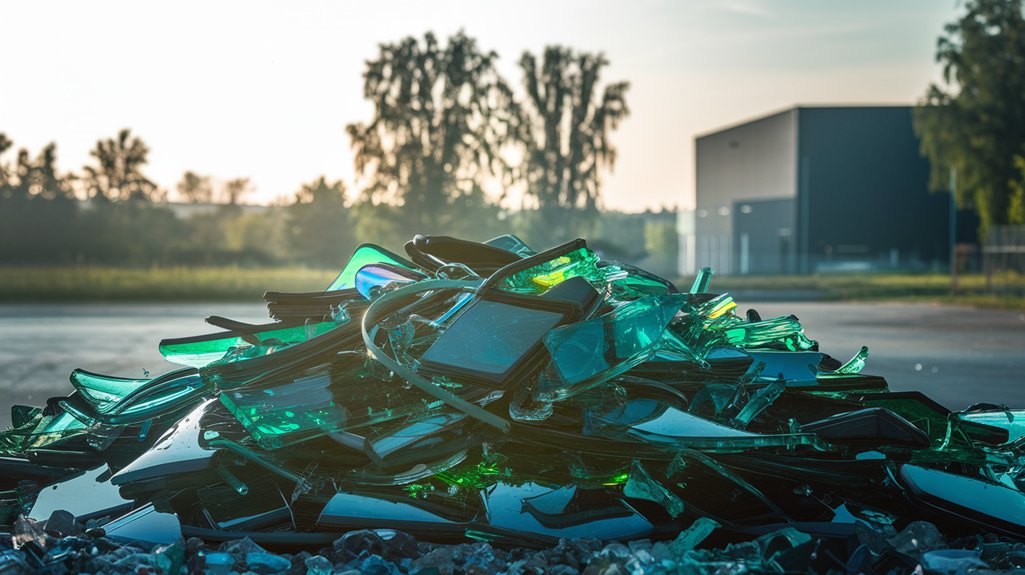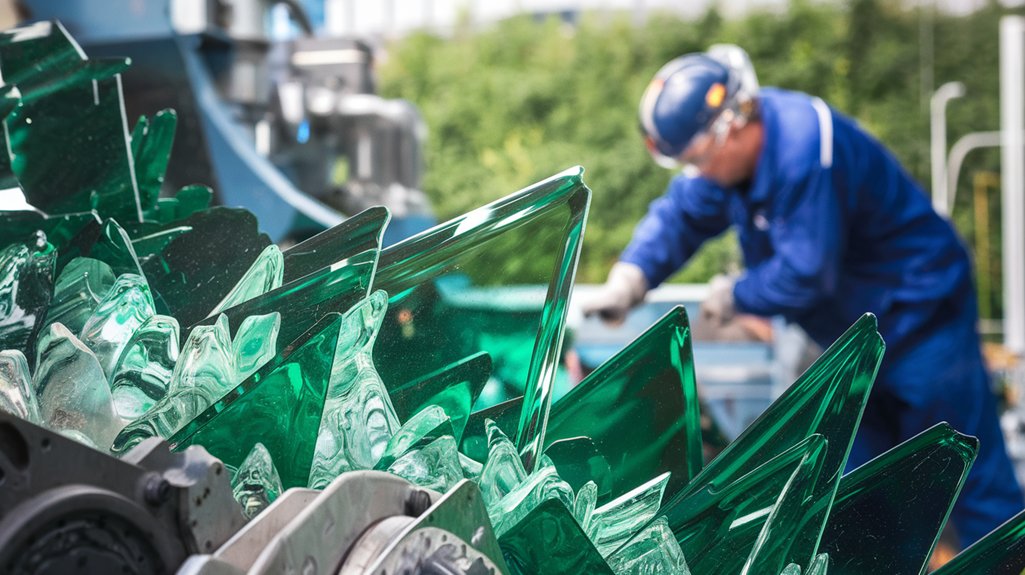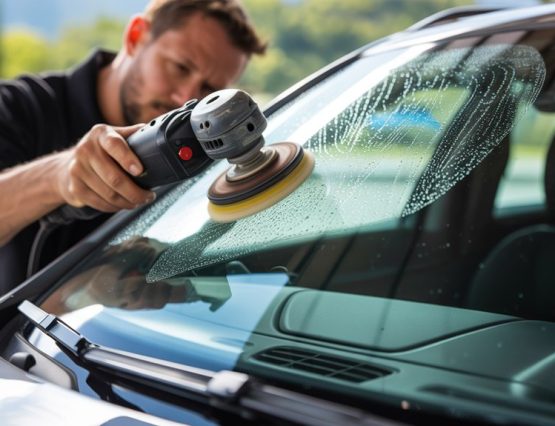
Key Takeaways
- Auto glass recycling reduces landfill waste, promoting a cleaner environment and supporting sustainability efforts in communities.
- It conserves natural resources by minimizing the need for new raw materials, preserving ecosystems.
- The recycling process saves energy and reduces carbon emissions, contributing to climate change mitigation.
- Job creation in recycling and manufacturing sectors boosts local economies while promoting eco-friendly practices.
- Innovations in recycling technology enhance efficiency and quality, further supporting a sustainable circular economy.
The Importance of Auto Glass Recycling

By recycling auto glass, you’re not just keeping materials out of landfills; you’re also supporting sustainability education in your community. Learn about the importance of glass recycling and how it helps build eco-conscious habits across the country.
Environmental Benefits of Recycling Auto Glass

Recycling auto glass reduces landfill space and conserves natural resources. The energy saved from recycling glass instead of producing new materials is significant. According to U.S. Department of Energy, recycling helps lower emissions and supports climate change goals.
The Auto Glass Recycling Process

Auto glass, often made from laminated safety glass, is first sorted by type, contaminants are removed, and then it’s crushed and melted into raw material for new products. This process significantly reduces the demand for new raw materials.
Challenges in Auto Glass Recycling
Contamination from adhesives and coatings complicates the process. Additionally, weak market demand and limited infrastructure hinder widespread adoption. Policy development and consumer awareness are needed to overcome these hurdles.
Innovations in Auto Glass Recycling Technology
| Technology | Benefits |
|---|---|
| Automated Sorting | Reduces contamination risk |
| Laser Cutting | Increases material recovery |
| Chemical Recycling | Enhances glass quality |
| Blockchain Tracking | Ensures transparency |
Case Studies of Successful Auto Glass Recycling Programs
Programs in the Pacific Northwest and California show how state support and manufacturer collaboration can increase recycling rates. These efforts serve as models for national implementation and industry best practices.
How Consumers Can Contribute to Auto Glass Recycling
| Action | Impact on Recycling | Tips |
|---|---|---|
| Educate Yourself | Increases demand | Research local programs |
| Participate in Events | Boosts involvement | Join local clean-up days |
| Support Local Shops | Encourages local recycling | Choose eco-friendly businesses |
| Share Information | Spreads awareness | Use social media platforms |
Frequently Asked Questions
What Types of Glass Can Be Included in Auto Glass Recycling?
Windshield and tempered glass can both be recycled under the proper conditions.
How Is Auto Glass Recycling Regulated in Different Regions?
Policies vary by state and country. Visit CalRecycle for state-specific guidance in California.
Are There Safety Concerns With Recycled Auto Glass?
Yes, when reused in vehicles, recycled glass must meet strict safety standards. Always verify source and quality.
What Happens to Auto Glass That Cannot Be Recycled?
It may be repurposed in construction or other industrial uses, reducing landfill dependency.
How Can Businesses Participate in Auto Glass Recycling Initiatives?
Businesses can partner with recyclers, adopt green policies, and raise awareness within their community or trade network.
Auto glass recycling is an impactful way to reduce waste, conserve energy, and build a circular economy. By supporting local recycling efforts and choosing eco-friendly services like A+ Auto Glass, you’re making a real difference.
Contact A+ Auto Glass to learn how we support sustainability in every step of the auto glass replacement and recycling process.








